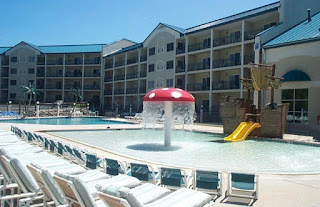1) We pushed one another in usual strain
Our simple way to get into the train
A loud cluttering of steps with confounded noise
Someone yelled farewell at the top of his voice
Some people ran after the leaving train
Shouting instructions with stress and strain.
Some latecomers hurried and stepped in haste
Some missed their train and cursed their fate.
2) As people settled down in their crowded cells
Two beggars came singing and ringing their bells
Meanwhile a vendor showed his sundry ware
Promising benefits beyond compare
Young boys wielding a bunch of brushes and shoeshine
Came in to polish people's shoes in the train.
A woman with a child entered and began to plead
To help her starving family to feed.




3) Displaying a row of glittering things
Neatly arranged in trays, a hawker brings
New brand watches, bangles and rings
Hair pins and cosmetics-- all foreign things;
He sells them cheaply at a throw-away price
No loss, no gain-- his pleasure lies in people's service.
A loud commotion with competitive bargain
To grab more things with maximum gain.
4) A country doctor came flourishing his store
Of herbs to cure all complaints up to the core
Lecturing on his search for rarest things
On distant hills as if he went for nectar to bring
He showed his photos with all leaders of the state
With proofs which praised him as the doctor great
The young and old fell to his mesmerizing talk
Within no time he sold away his herbal stock.
5) Amidst this multifarious enterprise,
As people bargained with shrewd words wise
A few plain-looking crooks procured their gain
By picking purses without any strain
While vendors shouted with loud ringing voice
While children whined to get things of their choice.
6) A blind beggar sang an old filmy song
Led by an orphan to help him along
Rubbing the floor, a boy with a dirty rag
Asked some coins for his self-employed service
For making floor more dirty with his dirty piece.
Denizens of poverty with dry brown hair
Struggling for bread with bodies bare.

7) Some talked about rackets and scams of the state
About fake promises of the leaders great
About soaring prices and corruption vile
While ladies talked about their fashions and style;
Some viewed videos, some chatted on their mobiles
While kids played games on their lap-tops with smiles
Others dwelt on their shares and careers' rise
A jovial discussion held by college guys.
8) Some snored, some laughed while children shouted with glee
Some played loud music, unconcerned and free;
Some littered floor with bits of paper and food
Smoking and spitting some near the corridor stood
Some left the doors of closet open with leaking taps
Some slept on the bare floor, poor begging chaps;
Some sneaked into the cells with aggressive stride
And ran away robbing the people inside.
9) A rich medley of people here one finds
From places and regions of various kinds
A huge collage of human feelings do We see
A rich diversity with kindred legacy
Our nation here in true dimension seen
Yet seem not so concerned, caring and clean
Let our journey be comfortable and serene
Let our surroundings be neat, pure and green.
+++++++++++++++++++++++++++
13th March, 2016 Somaseshu Gutala
strain = manner (predisposition or tendency) , neat= clean pure= pollution-free, green= Eco-friendly, medley= varied mixture, collage= combination
Note : The Indian Railways is one of the largest railway networks in the world. Started as an intercity service between Mumbai and Thane on April 16th 1853; it has developed by leaps and bounds into a gigantic organization having more than 1,15,000 kms of track covering a distance of nearly 65,800 kms. It carries more than 23 million passengers every day. More than 1.4 million people work in this prestigious organization. Both spatially and technologically many changes have occurred in the field of transport. Information technology and electronic equipment have changed the style of functioning and improved the means of speedy and effective communication and provided better service facilities and amenities to passengers. Yet there is a long way to go to see that the fruits of this development reach common man who travels in the general compartment. Prompt action, good maintenance, cleanliness and comfortable surroundings should be the prime objectives to make this department more people-friendly and corruption-free. The passengers should also have concern for other fellow-travelers and should be accommodative in their attitude. They should not cause loud disturbance and throw things all over or damage railway property.















































